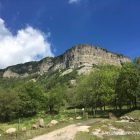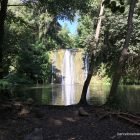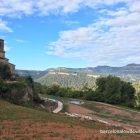Banyoles is a small town built on the shores of L’Estany de Banyoles, the largest lake in Catalonia, and hosted the rowing competitions for the 1992 Barcelona Olympics.
The lake was formed two hundred and fifty thousand years ago by the tectonic activity which created the Pyrenees mountain range. The area has been settled since the Neolithic period, approximately seven thousand years ago, and the town of Banyoles dates back to the ninth century AD.
Nowadays, Banyoles is a popular day trip from Barcelona and makes an ideal base for exploring the picturesque La Garrotxa region, known for its volcanos, woodlands and quaint medieval villages.
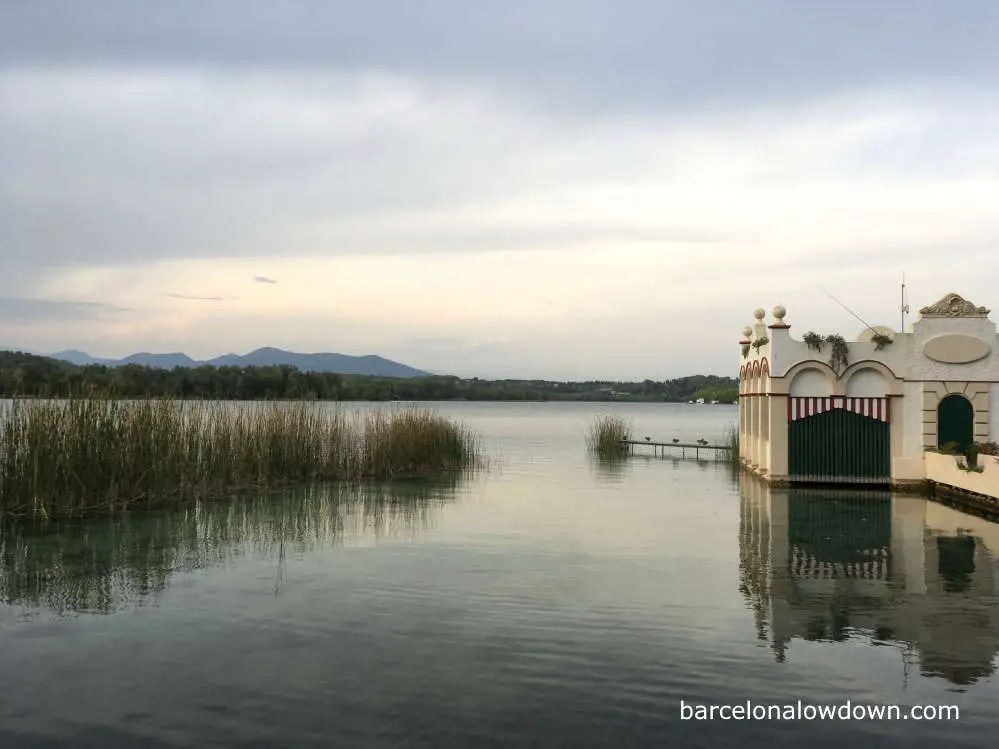
Things to see and do in Banyoles
L’Estany de Banyoles
Most visitors come to Banyoles to see the lake and have lunch at one of the lakeside restaurants.
If you have time, there’s a footpath which circumnavigates the lake. The path is approximately seven kilometres long and takes roughly an hour and a half to complete on foot at a leisurely pace.
The path is flat, well maintained and suitable for walkers of all ages. You can pick up a free map with points of interest marked on it at the tourist office by the lake.
Les Pesqueres (fishing huts)
The lake’s southern shore is dotted with twenty or so tiny houses called pesqueres. The huts were built during the latter part of the nineteenth and early twentieth century and belonged to wealthy families who used them as a base for fishing, boating and swimming in the lake.
One of the pesqueres now houses a tourist information office where you can pick up free maps of the village and information about the surrounding area. They also have several leaflets which describe walking routes near the lake.
Viewpoints
Much of the lakeshore is lined with trees and vegetation. On the western shore, there are several wooden jetties that were built to give visitors a better view of the lake.
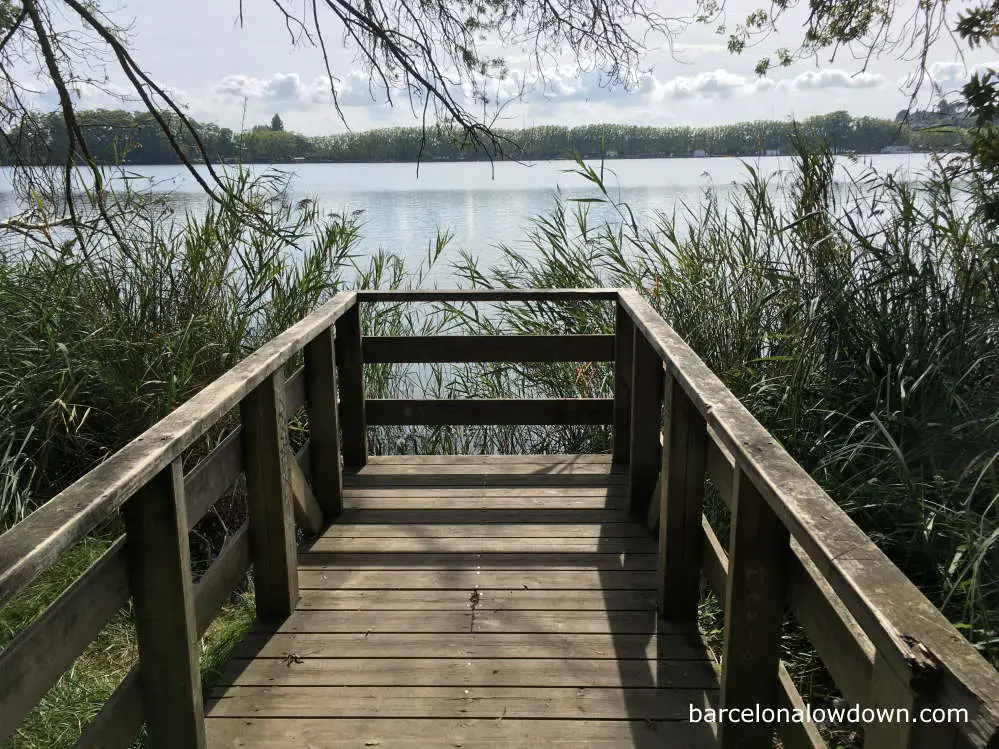
Santa María de Porqueres
To the west of the lake stands a small Romanesque church that dates back to the twelfth century. The church was built by a local nobleman who lived in the manor house next to the church.
La Draga Neolithic village
The La Draga Neolithic village is believed to have been the first settlement on the Iberian Peninsula located on the shores of a lake. The village was discovered in 1990, and many of the remains uncovered when the site was excavated are on display in the regional archaeological museum (see below).
The site is located in a small park and contains reconstructions of Neolithic huts, which school groups and guided tours can visit.
There’s more information about visiting the site here.
Boat tours
If you visit Banyoles at the weekend, you can take a tour of the lake in an electric-powered boat called La Tirona.
Tours depart from the tourist office at 12:00, 16:00 and 17:00, plus other times if there are at least ten passengers. At the time of writing, the boat tour, which lasts about forty minutes, costs €8 for adults and €6.50 for children. Children under four years old free of charge.
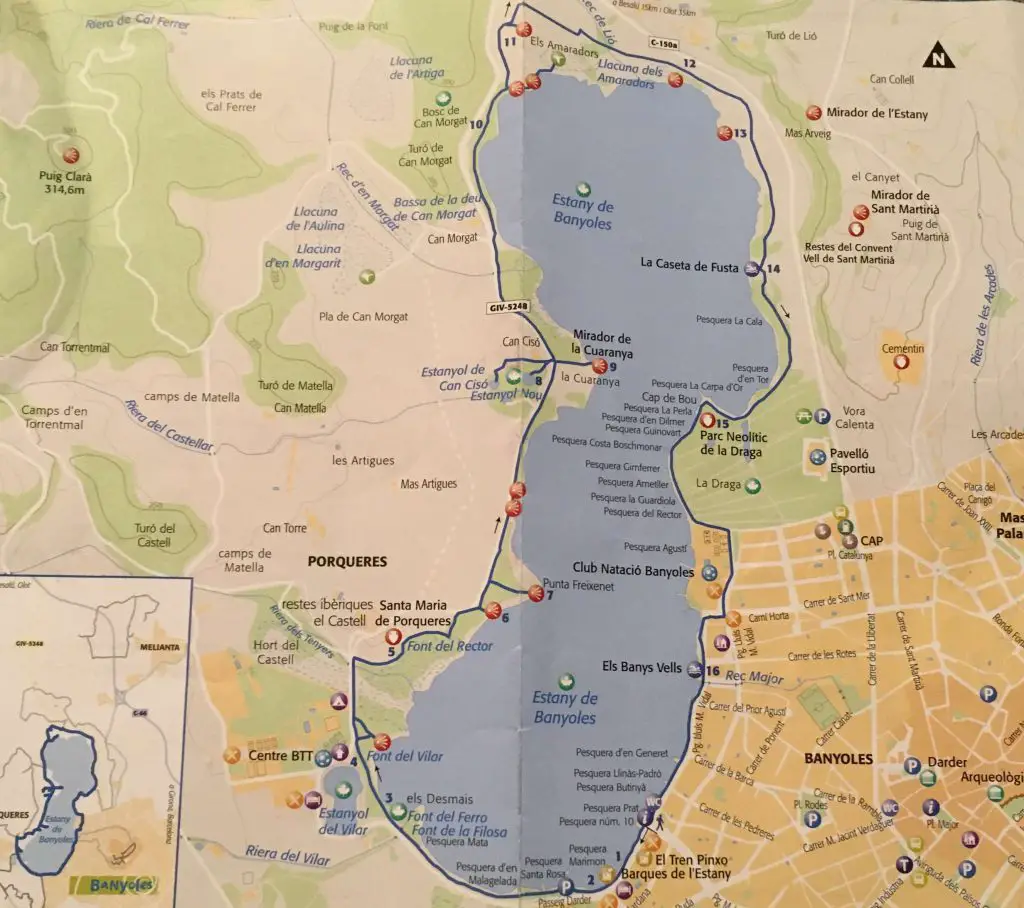
Rowing boat hire
If you prefer to explore the lake at your own pace, you can hire a rowing boat from the tourist office. The boats cost €5 per person per hour and can carry up to five people.
L’Estany de Banyoles is a nature reserve, and you are not allowed to use your own boat, kayak, canoe or SUP (stand up paddleboard) on the lake.
Swimming in Banyoles Lake
Swimming is only permitted at three locations on the lake:
1. La Caseta de Fusta
Located on the northeastern shore of the lake, La Caseta de Fusta is a public swimming area where you can swim free of charge.
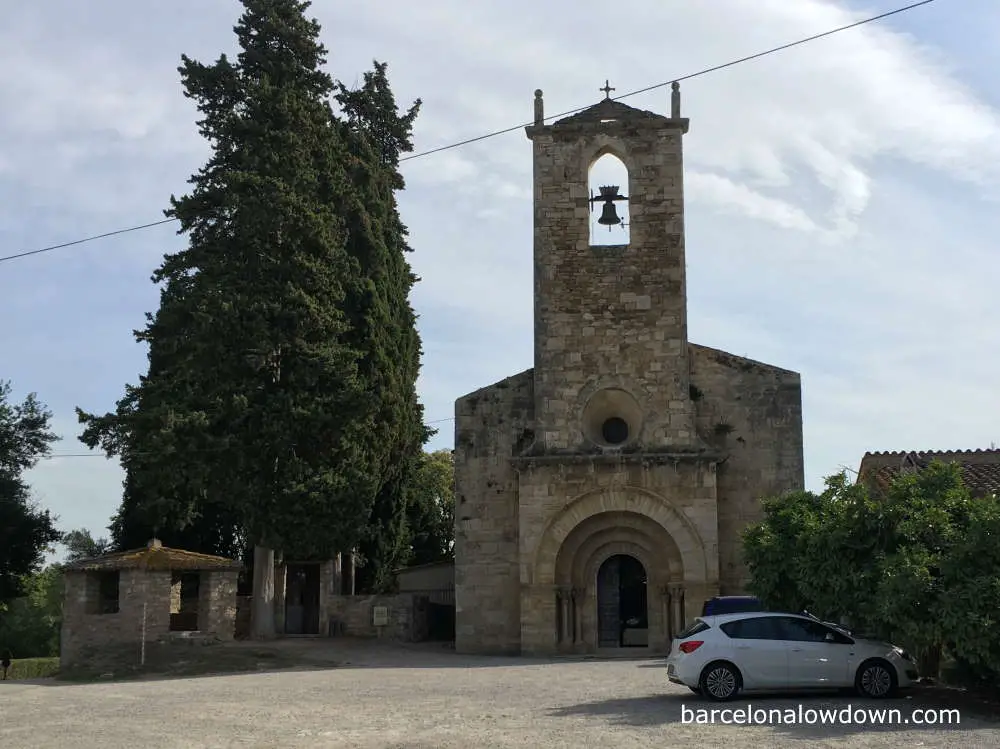
2. Club de natació de Banyoles
Banyoles swimming club where members can swim, row and canoe. Nonmembers can also pay to swim here, the price varies by season.
3. Banys Vells
Banys Vells is a bar/restaurant located on a small pier with access to the lake.
Other walking routes in Banyoles
In addition to the circuit of the lake, the tourist office has leaflets with five other walking routes. The itineraries are between two and seven kilometres long and explore the woodlands and hillsides surrounding the lake.
More information here.
Banyoles town
Banyoles dates back to the ninth century AD, and the narrow streets and plazas of the medieval town centre are well worth visiting.
In 812, Abbot Bonitus formed the Sant Esteve Monastery, which became one of the most important religious centres in the area and was under the protectorate of the Count of Besalú.
The town of Banyoles grew up around the monastery, and the townspeople built a series of ditches called “recs” to bring water from the lake. The plentiful water supply was used for irrigation and the textile industry that developed in the town. By the twelfth century, textiles from Banyoles were exported throughout Europe.
Today, Banyoles town centre still preserves elements of its historical past, including an attractive arcaded plaza, cobbled streets, medieval stone buildings and part of the medieval walls.
To find out more, you can pick up a free map at the Tourist Office with a walking route that takes you to the main places of interest.

Plaça Major de Banyoles
Life in Banyoles revolves around the Plaça Major, a picturesque square that dates back to the twelfth century. The plaza is flanked by arcaded stone buildings, most of which house bars and restaurants that set up tables on the plaza. At one side of the plaza, water still flows through one of the original medieval channels built to bring water from the lake.
Banyoles medieval walls
A short walk from Plaça Major stands the last remaining section of the medieval wall that once surrounded the town. Unusual hexagonal stone canopies adorn each end of the wall.
Museu Darder
The small Darder Museum recounts the history of the lake and its flora and fauna. The museum has display boards in English, Catalan and Spanish. If you are interested in geology and the area’s natural history, the museum’s main exhibition area contains lots of information.
For the more casual visitor, the walls of text and dim lighting can be a bit off-putting. If you understand Spanish or Catalan, there’s an audio-visual room that shows a short film that gives an excellent introduction to the history of the lake.
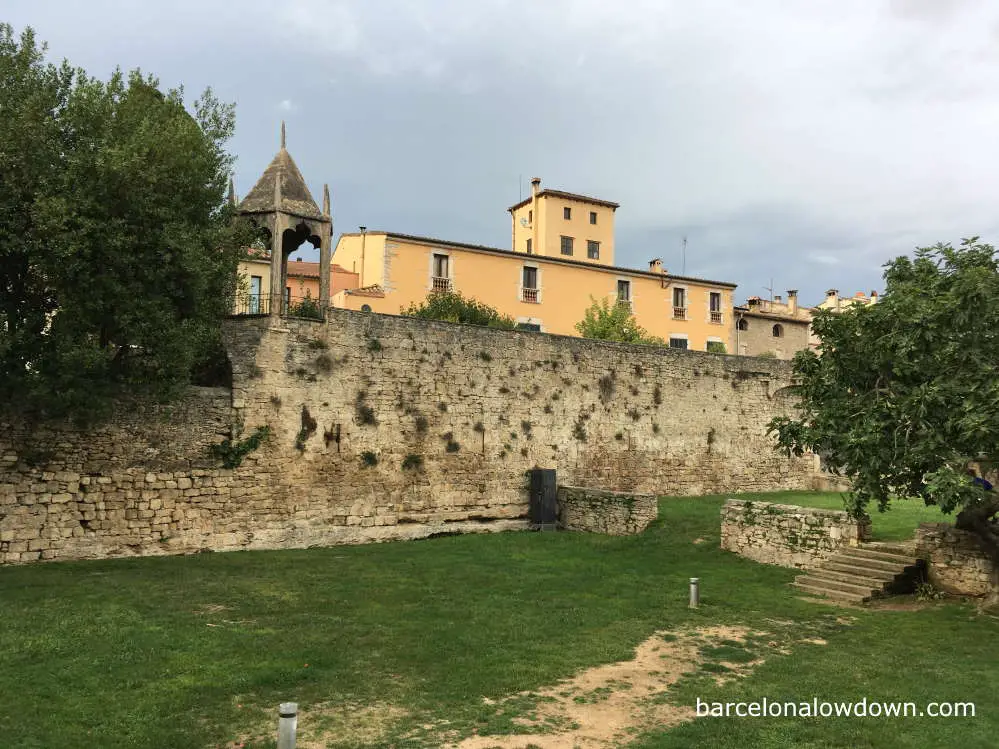
The basement of the museum contains glass cabinets that house an extensive collection of stuffed animals which were displayed in the museum when it first opened back in 1916.
The museum is open from Tuesday to Sunday, and the ticket includes entry to the Archaeological Museum.
Monastery of Sant Esteve
Founded in 812AD, the Monastery of Sant Esteve was one of the most important monasteries in Catalonia. The monastery has been destroyed and rebuilt on several occasions due to invasions, battles and earthquakes. The current building is a mixture of Catalan Gothic and Neoclassical architecture dating back to the sixteenth and seventeenth centuries.
The monastery is open to the public when masses are taking place.
Church of Santa María dels Turers
The Gothic-style Church of Santa María dels Turers dates back to the eleventh century and, like the Monastery of Sant Esteve, has been damaged and remodelled several times.
Regional Archaeological Museum
Banyoles’ archaeological museum is housed in a thirteenth-century Gothic building which was once an almshouse that provided food and clothing for the town’s poor.
The museum houses an extensive collection of artefacts found in the area from the Palaeolithic period (250,000 BC) and an important collection of Palaeontological discoveries, which are approximately 5 million years old.
When we visited in 2021, the museum was closed for refurbishing and is due to re-open in 2023.

La Llotja del Tint
The LLotja del Tint is a medieval factory where textiles were dyed. The gothic style building, built during the fifteenth century, now houses a contemporary art museum that is open to the public daily from Tuesday to Sunday.
Banyoles festivals and events
Tres Tombs
In January, the town celebrates the feast of St Anthony Abbot with a traditional Tres Tombs horse parade.
Aloja, Fira Medieval Fantàstica
Every October, the town centre hosts a medieval fayre with processions, reenactments, market stalls and music.
Fira de Sant Martiria
In November, Banyoles stages an equestrian event called la Fira de Sant Martiria.
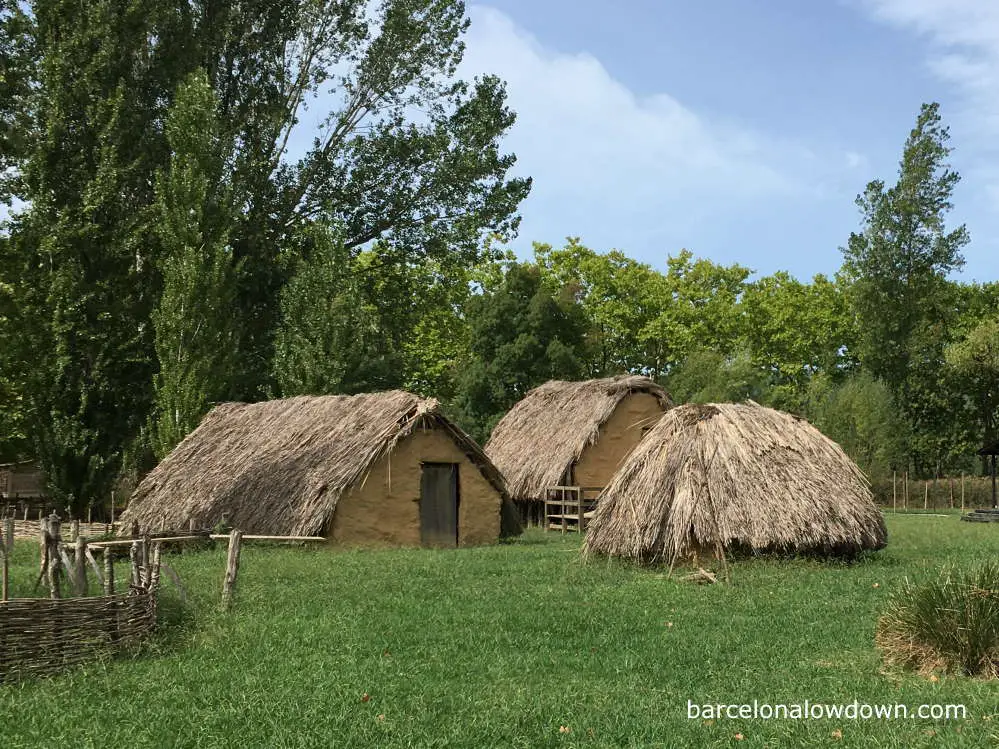
Where to stay in Banyoles
As mentioned at the start of this post, Banyoles is an ideal base for visiting the surrounding area, and there are plenty of apartments to choose from on Booking.com.
If you are travelling by car, it’s best to stay in the modern part of town, near the lake, because it’s easier to park and some of the apartments include private parking. Unfortunately, the accommodation we stayed in isn’t available at the moment, but this apartment near the lake looks like a good choice.
Vegetarian restaurants in Banyoles
Banyoles is a small town, and there are no vegetarian or vegan restaurants. Having said that, most restaurants have plenty of vegetables on the menu and you’ll have no problems finding vegetarian food.
When eating in non-vegetarian restaurants, you should always check before ordering because dishes made with mushrooms, lentils or other pulses often contain small quantities of ham or chorizo.
Cèntric
Cèntric is a small bar/restaurant that serves burgers and various tapas. Vegetarian food on the menu includes veggie burgers, patatas bravas, hummus, nachos, wraps and salads. Vegetarian dishes are marked on the menu. The restaurant is located on Plaça Major, the main square in the mediaeval town centre, and has a dozen or so tables outside where you can enjoy a meal or a few cold beers while soaking up the atmosphere.
Address: Plaça Major, 41
Fonda la Paz
A Fonda is a traditional Spanish inn, usually a combination of a restaurant and guest house. Fonda la Paz, located halfway between the lake and the historic town centre, has a large restaurant that serves a good value lunchtime menu. When we visited, there were several vegetarian options on the menu, and the food quality was good.
Address: Carrer Del Ponent, 18

How to get to Banyoles and where to park
By car
Banyoles is approximately 120 kilometres north of Barcelona, and it takes about an hour and a half to drive there by car. Take the C-33 and AP7 towards Girona, followed by the C-66 to Banyoles.
There’s plenty of free on-street parking at the south end of the lake, including a small car park at Passeig Darder, 67.
By bus
There are four buses daily between Barcelona and Banyoles. The route is operated by TEISA and departs from the company’s offices at C/ Pau Claris 117. Please note that this is NOT a bus station.
The journey takes around 1 hour 45 minutes, and the fare is approximately €15. Bus timetable and prices here.
By train
Banyoles isn’t on a train line, but you could catch a train to Girona and take a bus from there to Banyoles.
Tours
Get Your Guide offers tours of Banyoles, Besalú, Castellfollit de la Roca, Santa Pau and the La Garrotxa Volcanic Zone from Girona. More information and prices here >>
Places to visit near Banyoles
Besalú
The best known medieval village in the region is Besalú which is famous for its impressive fortified bridge that dates back to the eleventh century AD.
The town centre is a picturesque huddle of medieval stone houses, small squares and narrow cobbled streets. You can also visit the remains of a medieval Mikveh (ceremonial baths) and a quirky museum that houses a collection of tiny dioramas.
Castellfollit de la Roca
Castellfollit de la Roca was built on a lava flow at the confluence of the rivers Fluvià and Turonell. Perched precariously atop sheer basalt cliffs, the village is just two houses wide at its narrowest point.
The Garrotxa Volcanic Zone
The Garrotxa Volcanic Zone is one of the best conserved volcanic landscapes in Europe, with no less than forty-three inactive volcanoes and twenty lava flows.
Girona
Girona is famous for its well preserved medieval city centre, pastel-coloured houses that overlook the river Onyar, and for having been featured in series six of Game of Thrones. Girona is one of the most popular day trips from Barcelona.
Map of Banyoles
Zoom in to see the locations mentioned in this post.
Placeta de la Font 11, Banyoles
Plaça De Santa Maria 6, Banyoles
Museu Darder Banyoles, Plaça dels Estudis, Banyoles
Museu Darder Banyoles, Plaça dels Estudis, Banyoles, Girona 17820, Spain
Carrer Muralla, Banyoles
Església Santa Maria de Porqueres, Porqueres
Parc de la Draga, Banyoles
Monestir de Sant Esteve, Banyoles
Cèntric, Plaça Major, Banyoles
Plaça Major, Banyoles


